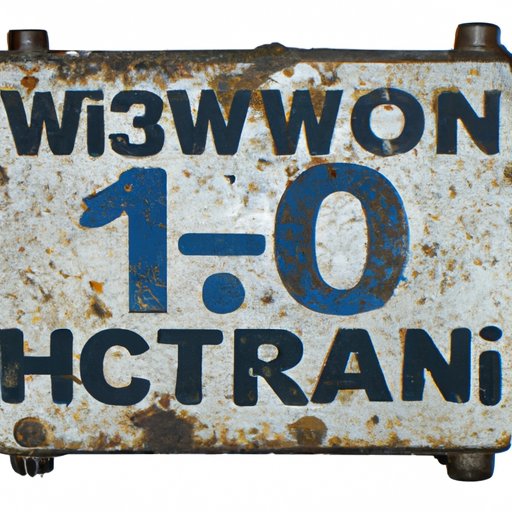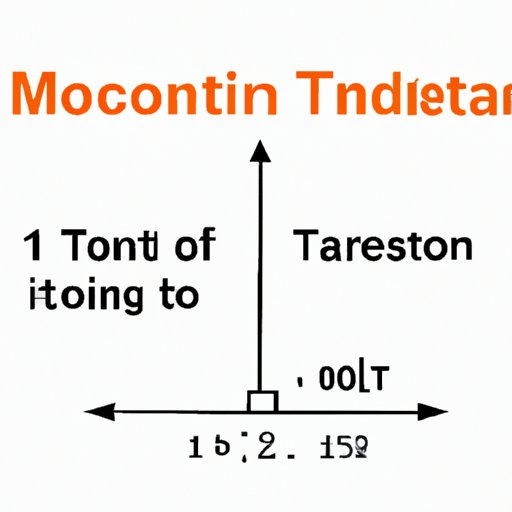
Introduction
One ton – just how much weight is that? The answer seems simple, but it’s important to understand the significance of this critical unit of measurement. Whether you’re in construction or agriculture, logistics or transportation, knowing how to calculate and convert 1 ton measurements can make all the difference in safety and efficiency. In this article, we’ll go through everything you need to know about 1 ton – what it means, how to use it, and real-life examples of how it’s used in various industries.
Understanding the significance of 1 ton
Let’s start with the basics. A ton is a unit of mass that’s used to measure weight or force, with “1 ton” equal to 2,000 pounds or 907.185 kilograms. Despite several different types of tons (such as a metric ton or a long ton), the term “ton” is generally used to describe the 2,000-pound unit in the United States.
When it comes to various industries, the importance of understanding 1 ton measurements cannot be understated. Whether you’re a construction worker, farmer, or logistics coordinator, you’ll be required to understand and use 1 ton measurements on a regular basis.
Industries such as mining, construction, and transportation often rely on 1 ton measurements to move heavy objects and cargo. For example, mining companies use dump trucks that can weigh up to 360 tons, making it essential for these companies to understand 1 ton to ensure the proper transporting of materials.

Converting 1 ton to other units of measurement
While 1 ton is a standard unit of measurement, it’s important to know how to convert it to other units to meet specific needs for different industries. For example, in Europe and other parts of the world, the metric system is used, and the tonne (metric ton) is the standard unit of measurement. It’s equivalent to 1,000 kilograms or 2,204.62 pounds.
The conversion process for 1 ton to other units of measurement can be complex, and it’s important to have a conversion table on hand. In the construction and transportation industries, for example, understanding how to convert 1 ton to pounds is essential when weighing large items like cargo or machinery.
Conversions become even more important when dealing with hazardous materials. Chemicals and gases are often measured by weight, meaning accurate conversions to ensure safety is crucial. In such instances, incorrect conversions can cause potential safety hazards.
Common objects that weigh around 1 ton
Trying to visualize how much 1 ton is can be difficult. To help you get a better understanding, let’s take a look at everyday objects that weigh around 1 ton.
Average cars often weigh around 1-2 tons, while large animals such as elephants can weigh up to 6 tons. A mid-size helicopter usually weighs around 1.5 tons, while large commercial airplanes can weigh up to 200 tons.
In the construction industry, excavators and bulldozers can weigh around two tons. Knowing the weight of these types of machinery is essential for transport and safety reasons – equipment that’s too heavy for transport can cause significant delays in project timelines.
The history of the term “ton”
The term “ton” has been around since ancient times and has undergone significant transformations throughout history. The US customary, or “short,” ton as we know it today was originally developed in the 16th century to estimate the weight of cargo on ships. As shipping and transportation industries grew, this unit of measurement became more and more popular.
The long ton – equivalent to 2,240 pounds – was used mainly in the UK and Europe until recently. However, it’s now mostly restricted to measuring the weight of coal, livestock, and other agricultural products.
Real-life applications of 1 ton in different industries
Now that we’ve explored the basics of 1 ton measurements, let’s take a closer look at how it plays a critical role in various industries.
In construction, 1 ton measurements are used to calculate the weight of heavy machinery and building materials. This knowledge is essential for purchasing heavy equipment or transporting bulk materials to job sites.
Agriculture is another industry in which 1 ton measurements are critical. Farmers need to know the weight of their crops to ensure proper picking and packaging. Knowing the weight of their produce also helps them calculate revenue and profit margins.
Mining is a third industry that heavily relies on the use of 1 ton measurements. From large trucks and excavators to crushing and cutting machinery, miners need to understand the weight of these heavy machines to ensure proper mining procedures and the safe transportation of mined minerals.
Comparing 1 ton to the weight of animals or vehicles
Comparing 1 ton to the weight of animals or vehicles can help put the significance of this measurement into perspective. As we previously mentioned, an average car weighs around 2 tons – or 4,000 pounds. A single semi-truck tire typically weighs in at 27 pounds, which means it would take almost 75 tires to equal 1 ton.
But let’s take a closer look at animals. While an average adult human weighs around 145 pounds, a crocodile can weigh up to 1 ton. Similarly, a male moose can weigh up to 1,500 pounds, but an elephant weighs almost six times the amount of 1 ton – around 6 tons or 12,000 pounds.
The impact of 1 ton on shipping and transportation industries
The shipping and transportation industries rely heavily on accurate 1 ton measurements. It’s essential to determine the weight of cargo and properly distribute it for safe transport on various types of vehicles like trains, planes, or trucks.
Transportation companies like UPS, FedEx, and DHL require accurate weight data to calculate shipping rates. When shipping internationally, companies must follow specific k,g, lbs. weight guidelines. Inaccurate measurements can be costly for both the company and their clients.
Conclusion
As we’ve explored, understanding 1 ton measurements is critical in various industries, from mining and agriculture to construction and transportation. Misunderstandings or miscalculations can cause potential safety hazards or significant delays in project timelines. By following proper conversion tables, comparing weights to everyday objects, and understanding the impact on logistics and transportation, we gain a better understanding of how 1 ton impacts our lives daily.
So, take the time to understand 1 ton measurements, especially if you work in an industry that relies on them. By doing so, you can avoid potential problems and have a better grasp of the significance of one ton of weight.





